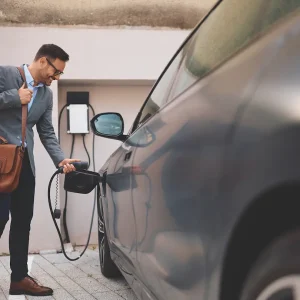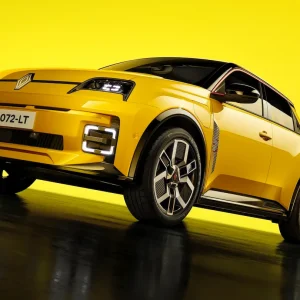Seat is planning to boost its sales of plug-in models in 2021 to help it return to profit following Covid-19 disruption and emissions-related fines in 2020.
The company, which includes the Seat and Cupra brands, reported a loss of 418 million euros in 2020, and confirmed 260 million were “emissions-related expenses”.
The EU stipulates that car manufacturers must meet an average CO2 emissions target in each year, with sales of fully electric models also given more weight in the calculation.
But the company says it’s on target with CO2 emissions this year and expects to return to profit after breaking even in the first quarter of 2021.
In the company’s annual press conference, president Wayne Griffiths also revealed the fully electric Cupra Born will arrive in the second half of 2021, and announced a new larger model, based on 2019’s Cupra Tavascan concept car will go into production in 2024.
Griffiths said despite the headwinds caused by Covid-19 disruption for its factory and in some of the company’s biggest European markets, including the UK, the company increased its margin per unit sold in 2020, thanks, in part, to the emphasis on more profitable SUV models, such as the Ateca and Tarraco.
It also launched the new Leon, with plug-in hybrid technology available, as well as the Cupra Formentor – the first model designed and developed solely for the Cupra brand – which will be available as a plug-in hybrid version in 2021.
The company’s vice-president for finance and IT, Carsen Isensee, said: “We started [last] year with a huge target for CO2 emissions and Covid-19 disrupted our plans in the year of our greatest product range of our history.
“We are now better prepared to face the future, and we expect to be on the right path in 2021. The boost of electrified Seat and Cupra models started at the end of last year, and we expect to reach emissions targets in 2021.
“We are investing in future products, and we are already getting back on track. We forecast to break even in the first quarter.”
Griffiths added: “Our goal [in 2021] is to increase sales and recover our volume to pre-Covid levels and return to profitability. We will increase our PHEV mix and launch the Cupra Born to enable us to achieve CO2 targets.
“Cupra will play an important role, and we’re planning to raise the volume mix from 5% to 10% and double the turnover of our Cupra business. [The] Formentor will account for 50% of Cupra sales and half of those will be the e-Hybrid PHEV.
“We have Ibiza and Arona facelifts arriving this year, and will be expanding our PHEV range with six models.”
The Tavascan will be a larger Cupra EV model, based on the same platform as the forthcoming Audi Q4 E-Tron, although Seat is leading development within Volkswagen Group on a compact electric car that will be deployed across the group.
Griffiths described it as an ‘urban electric car’ due in 2025, with similar dimensions to the current Seat Arona and priced at around £18,000-£23,000.
It’s likely that Volkswagen will have its own version of that model, produced by Seat, and it could also be used by Audi as an electric replacement for the Q2. But Griffiths was not prepared to commit to whether we would see the new model wearing a Seat or Cupra badge.
Griffiths added: “Urban electric cars will make electromobility accessible to the masses.”
When the Cupra Born launches later in 2021, Griffiths said it would come with a new direct sales model, which he said chimes with the Cupra brand’s unconventional and unique perception.
“The Cupra Born will open a new era for many reasons. Electrification and performance are a perfect match and shows electric cars can be fast and sexy.
“The Born arrives at the right moment. Now is the time to launch electrified cars, especially with the government incentives that are available across Europe.”





